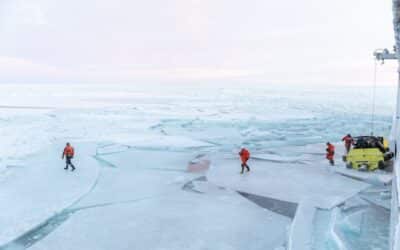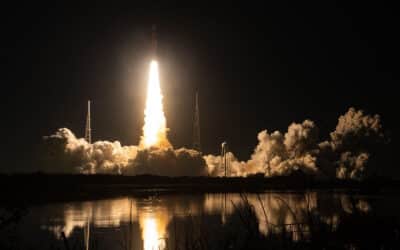by Duncan E.J. Currie LL.B. (Hons) LL.M.
This briefing outlines the principal decisions and resolutions of the Convention on Biological Diversity and London Convention/Protocol relating to ocean fertilization in the context of the Haida Salmon Restoration Corporation’s “Haida Salmon Restoration Project”.
The CBD Moratorium
In May 2008 the Parties at COP-9 of the Convention on Biological Diversity (CBD) decided in Decision IX/16 that the Parties noted the 2007 Statement of Concern of the London Convention and Protocol,[1] urged Parties and other Governments to act in accordance with the decision of the London Convention, recognized the current absence of reliable data covering all relevant aspects of ocean fertilization, without which there is an inadequate basis on which to assess their potential risks, and put into place what is now known as the CBD moratorium:
“4. Bearing in mind the ongoing scientific and legal analysis occurring under the auspices of the London Convention (1972) and the 1996 London Protocol, requests Parties and urges other Governments, in accordance with the precautionary approach, to ensure that ocean fertilization activities do not take place until there is an adequate scientific basis on which to justify such activities, including assessing associated risks, and a global, transparent and effective control and regulatory mechanism is in place for these activities; with the exception of small scale scientific research studies within coastal waters. Such studies should only be authorized if justified by the need to gather specific scientific data, and should also be subject to a thorough prior assessment of the potential impacts of the research studies on the marine environment, and be strictly controlled, and not be used for generating and selling carbon offsets or any other commercial purposes.”
So, this means that the governments (such as the Canadian government, which is a Party to the CBD) have been requested to “ensure” that ocean fertilization activities do not take place until:
1. there is an adequate scientific basis on which to justify such activities, including assessing associated risks, and
2. a global, transparent and effective control and regulatory mechanism is in place for these activities;
with the exception of small scale scientific research studies within coastal waters. Such studies should only be authorized if justified by the need to gather specific scientific data, and should also be subject to a thorough prior assessment of the potential impacts of the research studies on the marine environment, and be strictly controlled, and not be used for generating and selling carbon offsets or any other commercial purposes.
Ocean fertilization was also the subject of negotiations at UNCSD Rio+20 in June this year, and in the outcome documentThe Future We Want,[2] States in paragraph stated that:
“167. We stress our concern about the potential environmental impacts of ocean fertilization. In this regard, we recall the decisions related to ocean fertilization adopted by the relevant intergovernmental bodies, and resolve to continue addressing with utmost caution ocean fertilization, consistent with the precautionary approach.”
It should be noted that to ‘recall’ the decisions in this context means to reiterate or draw attention to them, and so confirms that the decisions of the CBD and the LC/P are still of good standing, as well as that States are still concerned about the potential environmental impacts of ocean fertilization.
London Convention and Protocol
2007
In 2007, the governing bodies of the London Convention on the Prevention of Marine Pollution by Dumping of Wastes and Other Matter (1972) and the 1996 London Protocol (LC/P)[3]
- endorsed the “Statement of Concern” of their Scientific Groups, taking the view that knowledge about the effectiveness and potential environmental impacts of ocean iron fertilization currently was insufficient to justify large-scale operations and that this could have a negative impact on the marine environment and human health;
- agreed that the scope of work of the London Convention and Protocol included ocean fertilization, as well as iron fertilization, and that these agreements were competent to address this issue in view of their general objective to protect and preserve the marine environment from all sources;
- agreed that they would further study the issue from the scientific and legal perspectives with a view to its regulation;
- developed specific terms of reference for the Scientific Groups to discuss ocean fertilization in May 2008 and established the Legal Intersessional Correspondence Group (LICG) to summarize the legal views by Contracting Parties as to whether, and how, the legal framework of the London Convention and Protocol applies to key scenarios on ocean fertilization (LC 29/17, paragraphs 4.14 to 4.29 and annex 6); and
- stated that “recognizing that it was within the purview of each State to consider proposals on a case-by- case basis in accordance with the London Convention and Protocol, urged States to use the utmost caution when considering proposals for large-scale ocean fertilization operations. The governing bodies took the view that, given the present state of knowledge regarding ocean fertilization, such large-scale operations were currently not justified.”
2008
Resolution LC-LP.1 (2008) on the Regulation of Ocean Fertilization adopted on 31 October 2008 noted that the Statement of concern’ on large-scale ocean fertilization by the Scientific Groups in June 2007 endorsed by the 29th Consultative Meeting and the 2nd Meeting of Contracting Parties in November 2007, and expanded on by the Scientific Groups in May 2008, remained valid, and noted COP-9 decision IX/16 on 30 May 2008, and provided that Parties:
“2. AGREE that for the purposes of this resolution, ocean fertilization is any activity undertaken by humans with the principal intention of stimulating primary productivity in the oceans[3]; [3] read: ” Ocean fertilization does not include conventional aquaculture, or mariculture, or the creation of artificial reefs.”
8. AGREE that, given the present state of knowledge, ocean fertilization activities other than legitimate scientific research should not be allowed. To this end, such other activities should be considered as contrary to the aims of the Convention and Protocol and not currently qualify for any exemption from the definition of dumping in Article III.1(b) of the Convention and Article 1.4.2 of the Protocol.”
The Contracting Parties agreed that scientific research proposals should be assessed on a case-by-case basis using an assessment framework to be developed by the Scientific Groups under the London Convention and Protocol.
2010
That assessment framework was developed in 2010 in the “Assessment Framework for Scientific Research Involving Ocean Fertilization” (adopted on 14 October 2010). The Framework provides a tool for assessing proposed activities on a case-by-case basis to determine if the proposed activity constitutes legitimate scientific research that is not contrary to the aims of the London Convention or Protocol.
In essence,
1. An Initial Assessment determines whether a proposed activity falls within the definition of ocean fertilization and has proper scientific attributes, and thus is eligible to be considered and evaluated in this framework. Upon completion of the Initial Assessment, the Secretariat of the London Convention and Protocol should be informed. Contracting Parties may also inform the Secretariat after receiving a proposal, prior to the completion of the Initial Assessment;
2. An Environmental Assessment is carried out, including Problem Formulation, Site Selection and Description, Exposure Assessment, Effects Assessment, Risk Characterization and Risk Management; and
3. The Environmental Assessment then feeds into the decision-making process, which is a determination that a proposed activity is legitimate scientific research, and is not contrary to the aims of the London Convention and Protocol, should only be made upon completion of the entire Framework. There is provision for monitoring: the collection and use of information resulting from monitoring informs future decision making and can improve future assessments.
A decision that a proposed activity is legitimate scientific research and is not contrary to the aims of the London Convention and Protocol should only be made if all earlier steps of the Framework, including the appropriate consultation and communication, have been satisfactorily completed and conditions are in place that ensure that, as far as practicable, environmental disturbance and detriment would be minimized and the scientific benefits maximized.
Consent should be sought from all countries with jurisdiction and/or in the Region of Potential Impact. If the risks and/or uncertainties are so high as to be deemed unacceptable, with respect to the protection of the marine environment, taking into account the precautionary approach, then a decision should be made to seek revision of or reject the proposal. Authorization of the project includes the duration and location of the activity, the requirements for monitoring and reporting, and any other conditions required by Contracting Parties. This authorization should be communicated to the Secretariat and relevant countries.
Conclusion
It is beyond the scope of this summary to conclusively analyze the activities undertaken under the Haida Salmon Restoration Corporation’s “Haida Salmon Restoration Project” and assess it against the CBD and LC/LP resolutions. If the “The Haida Salmon Restoration Project: The Story So Far September 2012” is correct, and the activity did, or was intended to, “replenished vital ocean mineral micronutrients, with the expectation and hope it would restore ten thousand square kilometers of ocean pasture to health,” then this certainly would appear to be an “activity undertaken by humans with the principal intention of stimulating primary productivity in the oceans” and thus qualify as ocean fertilization under LC-LP.1(2008).
The Canadian Environment Minister reportedly told Parliament[4] that “Environment Canada did not approve this non-scientific event. Enforcement officers are now investigating … This government takes very seriously our commitment to protect the environment and anyone who contravenes environmental law should be prosecuted to the full extent of the law.” Based on this statement, it appears that LC-LP.1(2008) and the Assessment Framework were not followed. It would therefore follow that the activity should be considered as contrary to the aims of the Convention and Protocol and not currently qualify for any exemption from the definition of dumping in Article III.1(b) of the Convention and Article 1.4.2 of the Protocol. The application of the Canadian Environmental Protection Act (EPA 1999) to the activity is a matter for Canadian law and Canadian lawyers.
Given the position under the LC/P, it is unnecessary to assess the Project’s activities under the CBD moratorium, but on the facts known to date it seems clear that (1) the activities did not constitute small scale scientific research studies within coastal waters; (2) they were not authorized; (3) they were not justified by the need to gather specific scientific data; (4) were not subject to a thorough prior assessment of the potential impacts of the research studies on the marine environment; and (5) were not strictly controlled by the Canadian government. Clearly they can not be used for generating and selling carbon offsets or any other commercial purposes.
Originally posted by ETC Group.
[1] The LC/P (i) endorsed the June 2007 “Statement of Concern regarding iron fertilization of the oceans to sequester CO2” of their Scientific Groups, (ii) urged States to use the utmost caution when considering proposals for large-scale ocean fertilization operations and (iii) took the view that, given the present state of knowledge regarding ocean fertilization, large-scale operations were currently not justified.
[2] 2012 United Nations Conference on Sustainable Development in Rio de Janeiro (Rio+20) in The Future We Want, confirmed in General Assembly resolution 66/88. United Nations Conference on Sustainable Development in Rio de Janeiro (Rio+20) in The Future We Want, confirmed in General Assembly resolution 66/88 (2012). Athttp://www.un.org/en/sustainablefuture/.
[3] See LC 30/4 25 July 2008, Report by the Legal and Intersessional Group on Ocean Fertilization (LICG)
[4] “Experiment to seed Pacific defended, “Globe and Mail, October 19, 2012.


